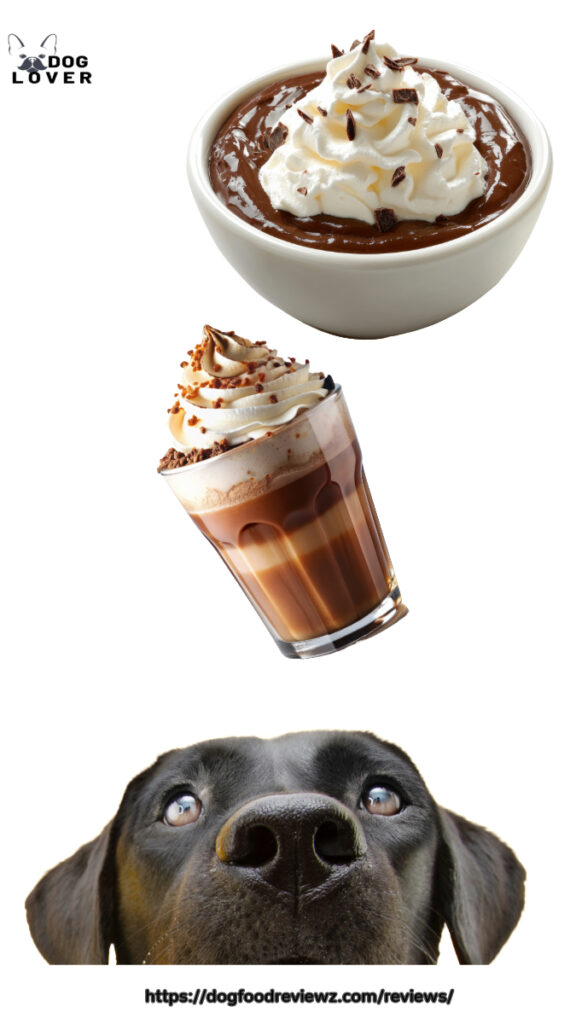Can dogs eat whipped cream?
Whipped cream is a popular dessert topping, loved for its fluffy texture and sweet taste.
While it’s a delicious treat for humans, it raises questions for dog owners:
Is whipped cream safe for dogs? The answer lies in understanding the different types of whipped cream, their ingredients, and how they can affect your dog’s health.
Let’s explore the safety and health implications of whipped cream for dogs and provide tips on offering it responsibly.

What is Whipped Cream?
Whipped cream is an airy, fluffy mixture made by whipping cream and sugar.
Depending on the variety, it may contain additional ingredients like vanilla, chocolate, or coffee.
While these flavors enhance the taste for humans, they can pose risks to dogs, making whipped cream a questionable choice for pets.
Can dogs eat whipped cream Safely?
Yes, dogs can eat whipped cream in small amounts as an occasional treat, provided they are not lactose intolerant or allergic to any of its ingredients.
However, whipped cream offers little to no nutritional value for dogs. Overconsumption can lead to digestive upset or more severe health issues.
Types of Whipped Cream and Their Safety for Dogs
Heavy Whipped Cream
Made from high-fat milk cream, heavy whipped cream is safe for dogs in small portions, provided it’s free of harmful additives like chocolate or vanilla extract. Overindulgence, however, can lead to obesity and pancreatitis.
Fresh Whipped Cream
With 18-25% fat content, fresh whipped cream is a better option compared to heavy cream. However, it still carries risks of weight gain and digestive upset if consumed excessively.
Light Whipped Cream
Typically made with processed ingredients and artificial sweeteners, light whipped cream is unsafe for dogs, especially if it contains xylitol, a highly toxic substance for dogs.
Sweetened Whipped Cream
Sweetened whipped cream, while safe in small amounts, should be avoided for dogs with lactose intolerance. Its high sugar content can lead to obesity and diabetes.
Unsweetened Whipped Cream
The safest whipped cream option, unsweetened varieties contain no added sugars, making them ideal for dogs when given sparingly.
Almond Milk Whipped Cream
A dairy-free alternative, almond milk whipped cream can be a safe treat for dogs that are not allergic to almonds. However, varieties containing xylitol must be strictly avoided.
Coconut Whipped Cream
Coconut whipped cream is a popular dairy-free option. While safe in moderation, its high-fat content can cause digestive upset or weight gain.
Vegan Whipped Cream
Vegan whipped cream made from aquafaba (chickpea water) is generally safe for dogs as long as it is free of artificial sweeteners. However, like other whipped creams, it should only be given occasionally.
Vanilla Whipped Cream
Not safe for dogs due to the presence of vanilla extract, which contains alcohol. Ingesting even small amounts can lead to alcohol poisoning in dogs.
Starbucks Whipped Cream (Puppuccinos)
Puppuccinos are dog-friendly whipped cream servings offered at Starbucks. While safe in small amounts for lactose-tolerant dogs, their high sugar content means they should only be given as a rare treat.
Health Risks of Whipped Cream for Dogs
Feeding whipped cream to dogs comes with risks, especially when consumed in large amounts. Common issues include:
- Lactose Intolerance
Many adult dogs lack lactase, the enzyme needed to digest lactose. Symptoms of lactose intolerance include bloating, diarrhea, vomiting, and stomach pain. - Obesity
The high fat content in whipped cream can contribute to unhealthy weight gain, increasing the risk of diabetes and joint problems. - Pancreatitis
Consuming high-fat foods like whipped cream can inflame the pancreas, leading to a life-threatening condition. Symptoms include fever, nausea, vomiting, and abdominal pain. - Dental Problems
The sugar in whipped cream promotes tooth decay, leading to oral health issues. - Toxic Ingredients
Some whipped cream varieties contain harmful additives like xylitol, chocolate, or vanilla extract, which can be fatal to dogs.
How much-whipped cream can you give your dog?
Whipped cream should only be offered in small amounts. A general guideline is to give no more than a portion equivalent to the size of your dog’s paw. For most dogs, 1-2 teaspoons are sufficient as an occasional treat.
Dog-Friendly Whipped Cream Alternatives
If you’re looking for a safer option, consider making homemade dog-friendly whipped cream. Simply whip coconut milk or coconut cream until it’s frothy, then chill it in the fridge. This dairy-free alternative is free of harmful additives and safer for most dogs.
Healthier Treats to Pair with Whipped Cream
Instead of relying on whipped cream, consider these healthier treat options for your dog:
Peanut Butter
A protein-rich treat packed with vitamins and healthy fats. Ensure it’s unsweetened and xylitol-free.
Yogurt
Plain, unsweetened yogurt contains probiotics that support digestive health. Use it sparingly if your dog is lactose-intolerant.
Fruits
Safe options like blueberries, apples, and watermelon provide hydration and essential vitamins. Avoid fruits with pits or toxic seeds.
Cottage Cheese
A low-fat, protein-packed option that’s easy on the stomach. Limit portions due to its salt content.
When should you avoid feeding whipped cream?
Avoid whipped cream entirely if your dog:
- Has a history of pancreatitis.
- Is lactose-intolerant.
- Is overweight or has diabetes.
- Has known allergies to any of its ingredients.
Final Thoughts
While whipped cream can be a safe occasional treat for dogs, it should never become a staple in their diet. Its high fat and sugar content pose risks that outweigh the benefits.
If you choose to give your dog whipped cream, opt for unsweetened or homemade varieties and keep the portions small.
By understanding the types and risks of whipped cream, you can make informed decisions about treating your furry friend responsibly.
Always prioritize healthier treat options and consult your vet if you’re unsure about introducing new foods into your dog’s diet.


